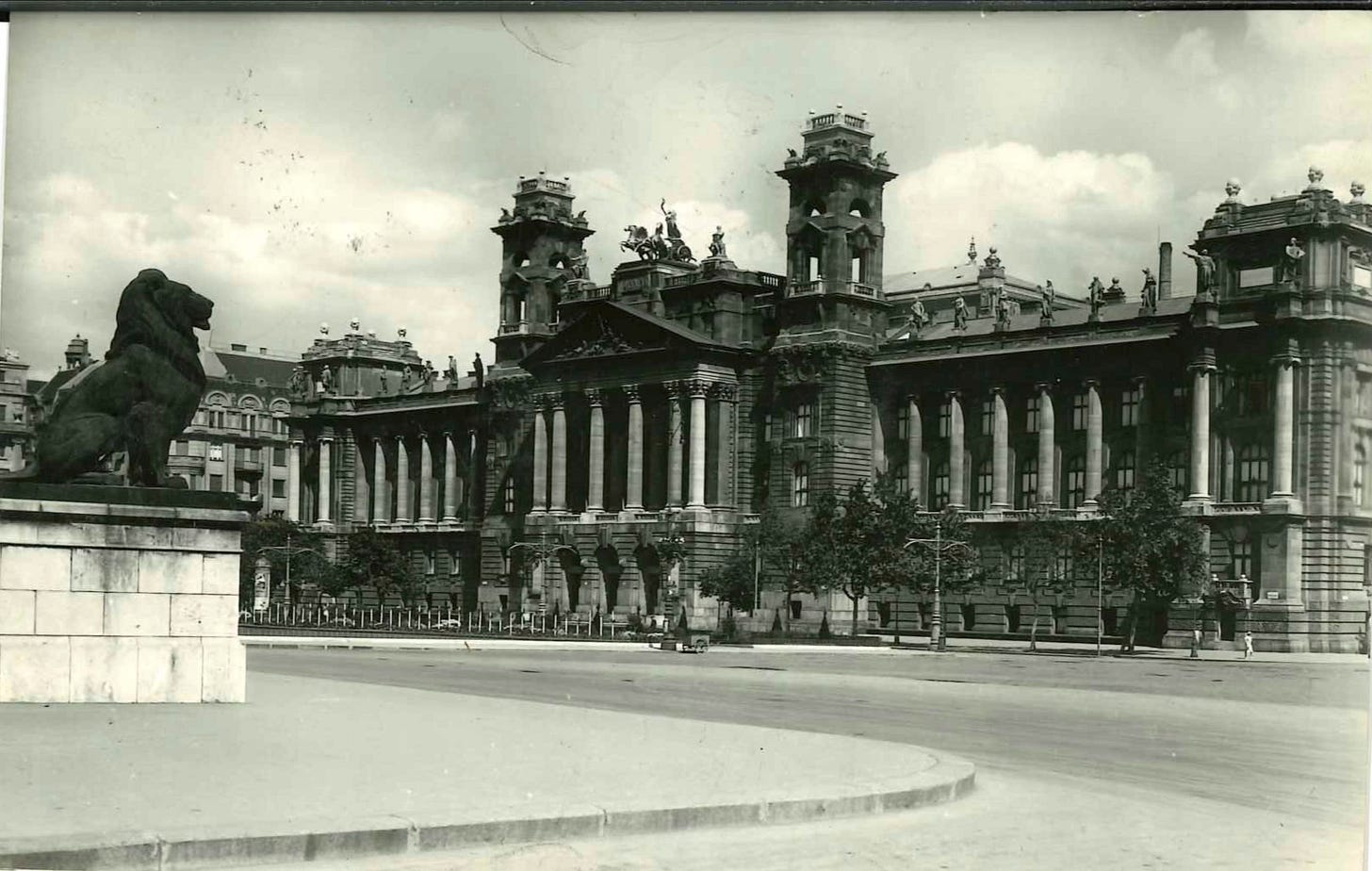As a follow-up to my last dedicated posting on Hungary’s metropolis, I decided to add some old photographs to the vintage postcards, mainly because one of the readers of this little Substack was so excited about them.
And since I don’t want to keep these beauties from you, here we go!
Fittingly, we shall start with the Hungarian Postal Service’s HQ, also known as Magyar Posta Székháza—an incredibly beautiful art nouveau palace:
Here’s bit more information, taken from its French Wikipedia entry:
The Post Palace was built to the designs of Gyula Sándy in an eclectic, Secession style in 1924-1926 as the headquarters of the Royal Hungarian Post Office. Interestingly, the country’s first circular passenger lift (paternoster) operated here. The large chimney was a reminder of the coal that used to burn in the courtyard.
Budapest, of course, has so much more to see, hence the next postcard shows the Fisherman’s Bastion, or Halászbástya, overlooking the Danube towards the Pester side of the city:
Moving on, here’s a postcard of the Eastern Railroad Station, or Keleti pályaudvar (which, incidentally, is the train station that connects Budapest with Vienna, known to be to the west of Hungary…):
Keleti, or “eastern railway station”, today is the main international and inter-city railway terminal in Budapest. Here’s bit “more” from Wikipedia:
The station stands where Rákóczi Avenue splits to become Kerepesi Avenue and Thököly Avenue. Its name in 1891 originates not only from its position as the easternmost of the city's rail termini, but for its original role as a terminus of the lines from eastern Hungary including Transylvania, and the Balkans. In contrast, the Nyugati (western) railway station used to serve lines toward Vienna and Paris.
The building was designed in eclectic style by Gyula Rochlitz and János Feketeházy and constructed between 1881 and 1884. The main façade is adorned with two statues depicting James Watt and George Stephenson. Inside the station are frescos by Karoly Lotz.[1]
The final postcard here shows the Palace of Justice, or Igazságügyi Palota, found on Kossuth Lajos tér in the V district of Budapest.
It was built between 1893 and 1896 according to plans by Alajos Hauszmann in the Eclectic style and originally housed the Royal Hungarian Curia (Supreme Court of Hungary 1723-1949). From 1957 to 1973, the premises served as exhibition space for the Hungarian National Gallery. From 1973 to 2017, the building housed the Ethnographic Museum. Following renovation, the building will once again house the Curia.
One notable aspect of the building is the following “gem”:
The inscription ‘IUSTITIA REGNORUM FUNDAMENTUM’ (Justice is the foundation of rule) above the entrance portal disappeared during the time of the People’s Republic. It was only reinstated after renovation work in 2021.
And this motto—actually, the personal motto of Emperor Francis II/I (r. 1792/1804-1835)—also adorns Vienna’s Outer Castle Gate (Äußeres Burgtor), or Heroes’ Gate (Heldentor), which connects this posting to the below-linked piece:










Good morning, Stephan. I would very much like to attend the zoom conference on July 1, but when I attempted to register, was told that I do not have a qualified account. Any thoughts about a workaround? Thank you. I'm enjoying your work.
Hungary. Not just about the Gabor sisters Lol
The architecture is so beautiful. Glad they’re rebuilding